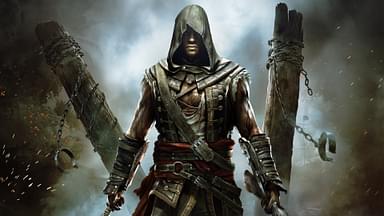Assassin’s Creed is known for being one of the biggest top sellers from Ubisoft in gaming history. Over the years, the franchise has focused on various historical settings, while providing stealth gameplay.
The Assassin’s Creed franchise boomed after the introduction of Ezio Auditore with the second sequel of the original game. Following that, the gameplay, story, and everything changed for the franchise and made it a worldwide success.
However, the initiation of the AC series isn’t quite grand and started as a sequel to Prince of Persia. With the upcoming release of AC Mirage, let’s dive into the story of the franchise and how it evolved over the years.
The accidental beginning of the Assassin’s Creed franchise
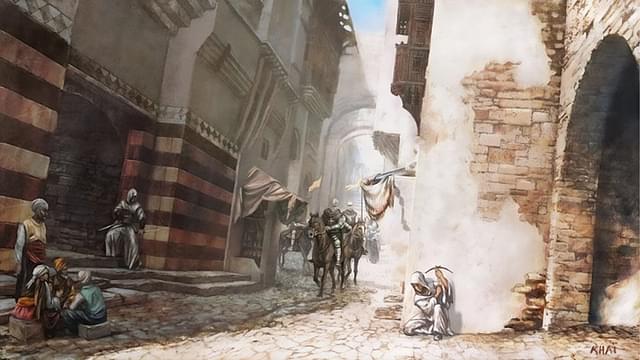
In the early years of Ubisoft, the Prince of Persia franchise turned out to be the most popular franchise. Following the major success of Prince of Persia Sands of Time, the game developers decided to create a spinoff. This spin-off will focus on the protectors of the Prince, and how they function as an organization.
The project got into the pre-production stage in 2004. However, since the game didn’t feature the main protagonist, Ubisoft Montreal got worried and instead worked on the next Prince of Persia game. Following the release of Warrior Within and The Two Thrones, Ubisoft went silent with the development of more Prince of Persia games.

In 2007, Ubisoft unveiled Assassin’s Creed, a new original game that features stealth gameplay. With a massive open world to explore and the top-tier graphics of that time, the game took the industry by storm. Moreover, the gameplay and story setting of the new franchise were a breath of fresh air for the players.
The story featured Desmond Miles, who has precursor genes that a hidden organization could access in order to simulate the past. The science fiction twist for the new franchise caught everyone’s attention in a short span. During gameplay, players would usually spend time as Altaïr Ibn-LaʼAhad and enjoy the gameplay.
Altair had only one Hidden Blade to take down his opponents without alerting anyone. However, when in trouble, he could switch to his sword for a fair fight. Additionally, players were also free to approach the situation as they liked which made it special. With humble beginnings and successful sales, the next sequel for the title was inevitable and thus began a new legacy.
The peak of the AC franchise with the Ezio Trilogy
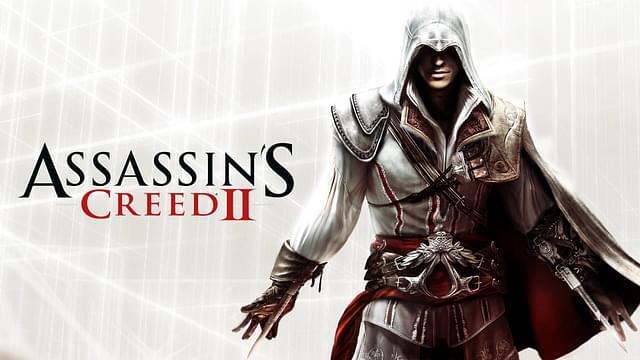
While the first laid the foundation for the franchise, it is the sequel that had the most impact. Assassin’s Creed 2 featured a brand new protagonist in the Renaissance period. This protagonist brought in a new charm and featured a story that touched every fan’s heart.
The story of the sequel was much better written and had a plot that kept players going. Moreover, the sound score of the new game was much better than the previous one and became a base for later titles.
In terms of gameplay, the next title also brought in new additions like Dual Hidden Blades. The combat system was largely improved with more freedom in battle approach. Additionally, the parkour system of the game had an overhaul as well, which gave players more freedom with vertical and horizontal traversal.

Assassin’s Creed Brotherhood acted as a sequel to the newly set storyline featuring the same protagonist. The bold and older look of the protagonist gave a sense of growing up together to the players.
The follow-up wasn’t just about Ezio, but also about a side plot that dealt that had templars and assassins duking it out in the modern day. This got players immersed in the storyline as the protagonist was just a human being trying to seek answers in life. Moreover, even though the gameplay did not change drastically, it did provide more opportunities to explore.
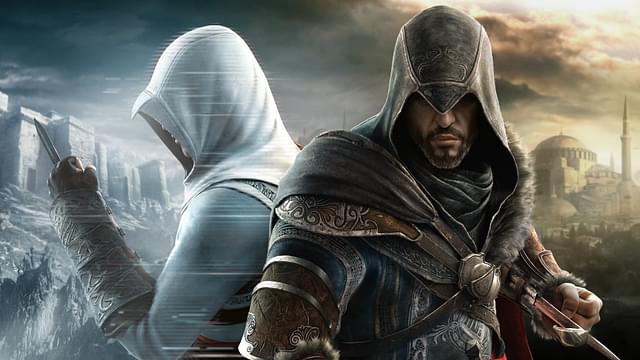
Assassin’s Creed Revelations marked the prestige moment for the trilogy. The last part in the trilogy would conclude the story by returning to roots and finishing the story of both Altair and Ezio together. Thus, giving solace to the players by unveiling unanswered questions.
The fourth game brought in new gameplay changes that tweaked the parkour system. This was done by keeping Hidden Blade mechanics intact and introducing a Hook Blade. This would act as an arm extension and help with vertical climb. This new addition also allowed for a new combat style that was fun to use.
However, the ending of the story is still something fans discuss as the conclusion also acts as a lesson to all. Getting the opportunity to play a character and watch them grow as a person, made it a favorite among many.
Redefinition of the combat, parkour, and main plot with Assassin’s Creed 3
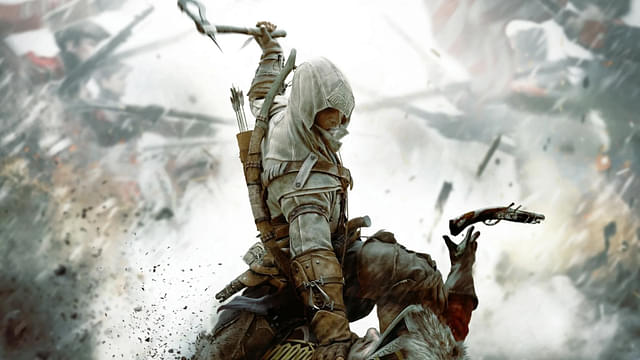
Assassin’s Creed 3 marked a new beginning for the franchise after the introduction of a new plot in a different period. Taking place in Colonial America, the game provided a new plot with shocking twists. While the story remains commendable, it was the gameplay that shifted the course of the franchise.
The entire parkour and combat system of the game was built from the ground up and gave a fresh look to the game. The combat of the game was more immersive, with cooler takedowns that made players feel unstoppable. The movement of character was also improvised, giving more flexibility when traversing around the world.
New weapons were added to the game, giving players more options to pick from. However, the most interesting part of the game was naval battles, which would become more significant in the later titles.
While the historic storyline progressed, the modern world story also took a twist. A new threat was provided to the modern-day protagonist, that only he can deal with. When dealing with the threat, the story of the main protagonist also comes to an end, ending the chapter of the classic Assassin’s Creed game.
A new yet familiar take on the franchise with AC Black Flag and Rogue
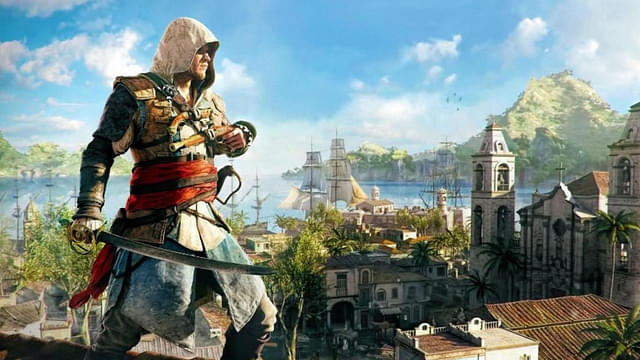
Assassin’s Creed Black Flag is one of the biggest sellers Ubisoft has ever produced. Primarily developed by Ubisoft Montreal, the franchise game was taken to great heights with a massive open world. While tales of Assassin’s Creed usually take place in certain cities, Black Flag took a different approach.
Instead of just letting people explore towns and cities, Ubisoft allowed an open world that could be explored by ship. As the game takes a pirate as the main protagonist, players are allowed to live the life of an outlaw in the sea. Naval battles could also help players earn fortunes and create fleets for oceanic missions.
Further, the game even introduced new mechanics with hunting that would help with upgrades. Not only could players hunt on land, but oceans were also great places for acquiring marine species.
The open world even consisted of vast vegetation that made it living and breathing. The Caribbean theme of the game prospered for this reason and made a mark in the fanbase. Deep jungles had treasures to find, and mysteries to solve, which made it an enjoyable experience as well.
However, the modern-day storyline didn’t feature many actions and only had puzzles to be solved. This was seen as a bummer in the fanbase. Nevertheless, since the main gameplay was exceptionally good, those small issues were forgiven.
Assassin’s Creed Rogue was similarly built as this game, as it used the same engine. Thus, most of the features in the game matched with AC Black Flag, and players were happy with it. However, the plot of the game is different as it features a Templar as the main protagonist. It also serves as a prequel to both Assassin’s Creed 3 and Unity as well.
The accident from Ubisoft that led the later games to be hated

Assassin’s Creed franchise took a generational leap with the release of Unity. The game was developed on a new engine called AnvilNext 2.0, which features next-gen graphics for PlayStation 4 and Xbox One. While this move was meant for improved gameplay, the rushed release of the game broke it.
Fans started hating Assassin’s Creed Unity as the game was a bug fest. It had immense issues related to graphics, optimization, gameplay, and more. Due to its unplayable nature, customers were furious with the game and started to spread hate. While Ubisoft actively tried to fix the issues, over a long period those weren’t taken care of. As a result, the fans lost trust in the company altogether.
The issues aside, the game did introduce a better parkour system was nice to look at, and functioned well. Yet, due to bugs, those improvements were completely overlooked and the only thing remaining was hate.
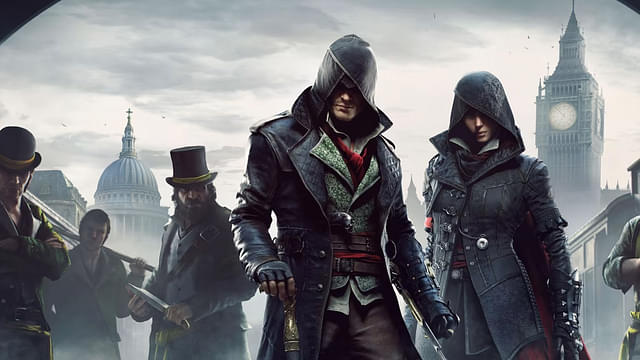
When the next title, Assassin’s Creed Syndicate was released, players were skeptical about buying the game. Since the game was based on the same engine as Unity, the fear of giving a broken game was at its peak. To everyone’s surprise, the latest game didn’t have many bugs but did have certain downgrades.
When compared to its predecessor, AC Syndicate didn’t feature the improved parkour movements as Unity. Instead, a new parkour system was introduced to support two different characters. On the brighter side, the vertical and horizontal traversal was improved with the introduction of a grappling hook.
While both had their flashy perks and gameplay improvements, the fanbase felt it was stale as it did not feature a massive open world like its predecessor. Thus, leading to the failure of both franchises after release.
The shift to the RPG genre damaged the reputation of the franchise
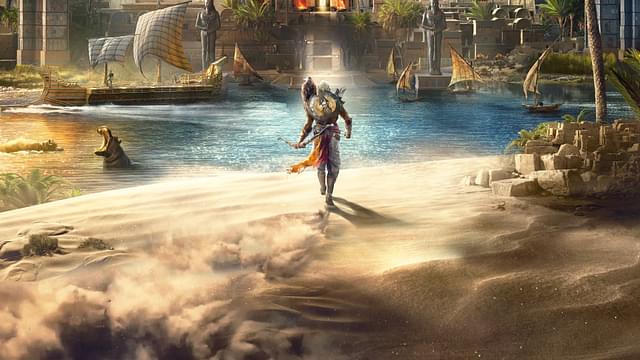
That fanbase remains divided over the topic of whether the shift to RPG gameplay was good for the Assassin’s Creed franchise or not. If feedback is collected from the entire fanbase, the overall opinion remains neutral.
AC Origins was the first game that included RPG mechanics in classic gameplay. The combination worked quite well, as it provided a better gameplay approach with fun combat. Moreover, the game followed a linear story with great side-quests, which made it great. Additionally, the protagonist of the story was also liked by many, which led to its popularity.
However, the parkour system was not the same anymore and featured a variety of movements. This wasn’t adopted well by the fans as the shift felt like a deterioration. Still, the gameplay was full of content, and players didn’t have many complaints.
The implementation of RPG mechanics was in a controversial position, and the release of AC Odyssey turned out to be a complete deviation. The game featured a revamped RPG gameplay that allowed players to pick their endings. This did not appeal to the majority of the fanbase and the studio faced backlash after the game’s release.
The Hidden Blade was also removed with AC Odyssey, which is iconic to the franchise and enraged the fans. Thus, Ubisoft lost the trust of fans yet again with the release of a second RPG-based title.
Despite failing, Ubisoft unveiled Assassin’s Creed Valhalla, which also featured improved RPG-like mechanics. The latest part also saw the return of Hidden Blade with a new character called Basim. While the game takes place during the Viking era, the Assassin order is presented to the new protagonist in acceptable ways.
While the game had minimal flaws and great gameplay additions which allowed the game to be longer, it didn’t impress the fanbase yet again. Thus, losing the interest and trust of the fanbase, as it seemed the classic series that all know is a myth.
Return of classic gameplay with Assassin’s Creed Mirage

In 2022, Ubisoft first announced the existence of Assassin’s Creed Mirage which takes place in 9th century Baghdad. However, fans got their first look at the gameplay in 2023 which demonstrated the rollback of certain game mechanics.
The new title will be developed on Ubisoft Anvil, which is a newer engine that was used for creating AC Valhalla. However, since the previous game was an RPG, the developers had to create Mirage from the ground up to give a familiar experience.
Major improvements in terms of parkour could be seen in Mirage. Furthermore, gadgets that were discontinued after Syndicate will make a return to the franchise. However, the game’s performance with gameplay and parkour together remains a mystery.
With the series coming full circle in terms of gameplay and story, it is an exciting time for the fans to be in. If you liked reading this content, do give us a follow to get similar writeups. You can also visit our main hub by clicking here.


